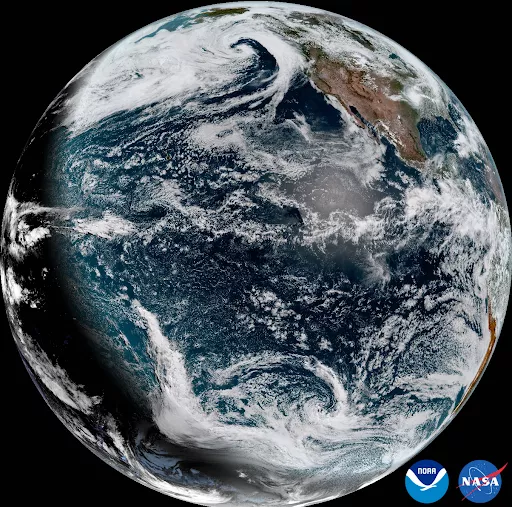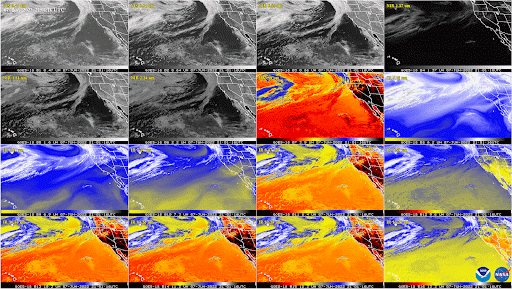NOAA’s newest weather satellite, GOES-18, is now sending back data from its new post-launch testing position at 136.8 degrees west longitude over the Pacific Ocean.
GOES-18, which launched on March 1, 2022, was initially delivered to 89.5 degrees west over the Central U.S. and began post-launch testing and calibration of its instruments and systems in that location. On May 16, GOES-18 began drifting west, arriving at 136.8 degrees west on June 6. Post-launch testing restarted on June 7.
From its new vantage point, GOES-18 can now see Alaska, Hawaii, and the Pacific Ocean all the way to New Zealand. It is ideally located to monitor the northeastern Pacific, where many of the weather systems affecting the continental United States originate, and to keep watch over the eastern Pacific hurricane basin. Once operational, the satellite will also provide critical data for forecasters, emergency managers, first responders, and the aviation industry on environmental hazards like turbulence, fires, smoke and dust, coastal fog, and volcanic eruptions.

Recently, the GOES-18 Advanced Baseline Imager (ABI) monitored a number of weather events, meteorological phenomena, and environmental hazards. The satellite tracked fire activity in Alaska, snow and the movement of fog and smoke. It monitored a low pressure system off the West Coast and severe thunderstorms in Colorado. GOES-18 also viewed mesmerizing von Kármán vortices off the coast of Isla Guadalupe and beautiful cloud formations over Hawaii.
Usually, GOES satellites complete post-launch testing from the 89.5 degrees west test position. GOES-18 is undergoing a “split” post-launch testing phase that is different from that of GOES-16 and GOES-17. This test plan gets GOES-18 into position near the current GOES West location earlier so its ABI data will be available to forecasters during the “warm” period that degrades some GOES-17 imagery during the height of hurricane season.
During two periods in August and October of this year, GOES West data users will receive GOES-18 ABI data for operational use. The GOES-18 ABI cooling system is performing well, with no signs of the issue that affects GOES-17. The ABI was redesigned for GOES-18 to reduce the likelihood of future cooling system anomalies. The new design uses a simpler hardware configuration that eliminates the filters that are susceptible to debris.

NOAA has released the first imagery and data from four of its instruments, Space Environment In-Situ Suite (SEISS), Goddard Magnetometer (GMAG), ABI, and Geostationary Lightning Mapper (GLM). The first data and imagery from the Extreme Ultraviolet and Irradiance Sensors (EXIS) and Solar Ultraviolet Imagery (SUVI) are expected in June and July, respectively.
NOAA plans for GOES-18 to replace GOES-17 as GOES West in early 2023. GOES-17 will become an on-orbit spare.
Imagery from GOES-18 during the post-launch testing phase should be considered preliminary and non-operational.
